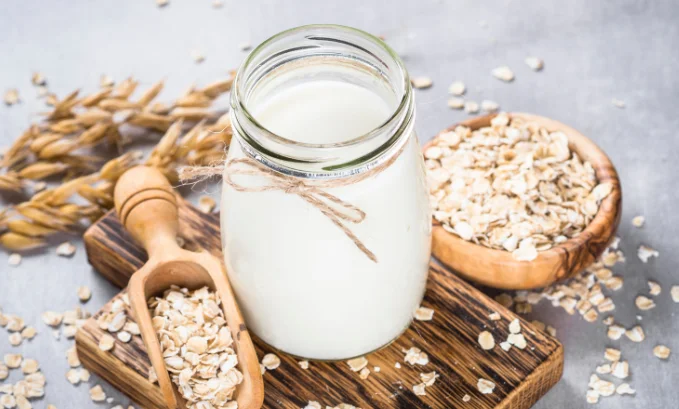Today’s topic is Nutrition. On Wednesdays, we seek to provide you with up-to-date conversations surrounding personal nutrition and dietary habits, as well as tips that we believe will boost your overall well-being!
Today’s subject is milk; its benefits in adulthood and adolescence alike.
Milk provides the first taste of nourishment for people around the world.
Whether it’s breast milk, formula, or even cow’s milk, there’s no questioning the importance of this dairy food as a supplier of key nutrients-including protein, calcium, magnesium, iodine, and even vitamin D-which increasing evidence suggests can substantially lessen the incidence of late-life chronic disease. According to the United States Department of Agriculture, upwards of 90% of Americans do not consume enough dairy in their diet.
Though your dairy needs may depend on age, sex, height, weight, and activity level, eating or drinking milk products can offer indisputable health benefits; addressing collective nutritional deficiencies around the world.
Milk’s health depends on the type of milk being consumed. Pasteurized milk is high in protein, low in fat, and free of additives that can damage your health. On the other hand, raw milk (and dairy) which has not been pasteurized, contains more amino acids, fatty acids, vitamins, and minerals (not decomposed by the heating process).
There also exists a variety of non-milk alternatives for those with lactose sensitivity, or dairy allergies. For today’s post, we will focus on the benefits of cow’s milk in its many forms-including full-fat, fat-free, skimmed, lactose-free, fortified (w. omega-3), hormone-free, organic, or raw, among other options. Milk provides a variety of essential nutrients; from macro- to micro-, milk contains proteins, fats, carbs, calcium, phosphorous, zinc, riboflavin, choline, magnesium, selenium, and vitamins A/D/B-12. These nutrients can benefit the body in various ways.
The vitamin D and calcium found in milk strengthen your bones, thus aiding in the maintenance of bone density and the prevention of osteoporosis. Large numbers of European populations are vitamin D deficient, as are the majority of people from the nation of India. Supplementing regional deficiencies with increased milk consumption may help to alleviate the associated conditions (bone strength, immune health, etc.).
Adequate vitamin D levels also support the production of serotonin, a hormone associated with mood and sleep; offering a potential tool to manage the symptoms of depression. Additionally, the high concentrations of potassium (found in milk), can reduce the risk of cardiovascular disease.
The saturated fat in full-fat (whole) dairy products can, however, increase the risk of heart disease, mitigating the benefits stated above. Those at risk of stroke or cardiovascular disease should opt for low-fat or skim milk instead.
Regularly consuming milk gives the gift of growth as much as it does prevention (of disease). Various studies have shown milk to be a key food for stimulating growth in children, as well as enhancing recovery in adults.
An average cup of milk contains anywhere from 8-13g of protein, which is necessary for repairing tissues and preserving, or increasing lean muscle mass. A diet that includes adequate amounts of protein can improve wound healing, increase muscle mass, and even promote weight loss. As opposed to protein isolates, milk containing essential fatty acids, in addition to both whey/casein protein, improves its nutrient profile, proving a favorable alternative for those looking to put on size.
Study
A study published in the Journal of the American Dietetic Association (2000), that explored the effects of increased consumption of fluid milk on energy and nutrient intake, found that those who increased their milk intake by 3 cups/day (for 12 weeks) gained .6kg more than those who maintained “baseline” levels.
Children who fall behind the growth curve, or those who find themselves classified as “under-weight”, might find it advantageous to drink more milk, as it is linked to healthy weight gain (when consumed as a part of a well-rounded diet). Some researchers have also found that adults who consume more milk (and dairy products) have higher amounts of glutathione, a powerful antioxidant, in their brains.
As was previously stated, the majority of people do not consume adequate amounts of dairy in their diets. These numbers vary little for men and women above the age of nine; as it is recommended that all people (above the age of nine) consume up to 3 cups of dairy/per day.
These numbers, however, vary in the early stages of life, gradually increasing from infancy, through what we would consider “childhood”. During this period, it is recommended that people ages 12-23 months consume 1 ⅔-2 cups/day, and people ages 2-3 yrs. consume 2-2½ cups/day, and people ages 4-8 consume up to 2½ cups/day.
The benefits of milk in a child’s diet
The benefits of milk in a child’s diet have been known for many years, and are now thought to be primarily mediated through the stimulation of IGF-1 by the casein protein contained in milk. Insulin-like growth factor 1 (IGF-1) is essential for bone growth, skeletal maturation, and bone mass acquisition during childhood, as well as the maintenance of bone density in adult life.
A 2020 study, housed at the Institute for Food, Nutrition, and Health at the University of Reading, produced a cross-sectional analysis, highlighting the importance of milk (and products) in the diets of infants, adolescents, pregnant women, adults, and the elderly. It found that reduced milk consumption in adolescents (girls) was of particular concern, as its negative impact on bone development would likely prevail later in life. Similarly, it was suggested that dairy be used to manage malnutrition in older people; curtailing a potential loss of muscle mass, bone density, and overall functionality.
This concurs with the findings produced by the Journal of the American Dietetic Association study. When compared with control groups, participants in milk-supplemented groups reported significant increases in energy, protein, vitamins A, D, and B-12, riboflavin, calcium, phosphorous, magnesium, zinc, and potassium intake. Prevalence of nutrient inadequacy decreased in men and women, showing similar decreases in blood pleasure.
Total LDL (bad) cholesterol and the ratio of total cholesterol to HDL (good) cholesterol remained unchanged. This study was performed in men and women, aged 55-85 years, thus contributing to the notion that older adults should increase milk intake as a means to address nutrient/energy deficiency.
Research has shown that consuming at and beyond the daily recommended amount of milk can prevent nutrient deficiency, whilst promoting heart health, bone health, and overall growth/wellbeing.
For some, consuming milk (and dairy products) is simply not an option due to medical limitations. For those with a milk allergy, lactose intolerance, or even casein sensitivity, viable milk alternatives include calcium-fortified juices, calcium-fortified plant-based milk, and fish, tofu made with calcium sulfate, tahini (made with sesame butter or paste), and leafy greens, as recommended by the USDA.
Otherwise, it is recommended that you consume the recommended amount of milk (per day) to fully reap the benefits It has to offer. Until next time…
Author: Ryan Alvarez
References
- Barr, S. L., McCarron, D. A., Heaney, R. P., Dawson-Hughes, B., Berga, S. L., Stern, J. S., & Oparil, S. (2003, April 23). Effects of increased consumption of fluid milk on energy and nutrient intake, body weight, and cardiovascular risk factors in healthy older adults. Journal of the American Dietetic Association. Retrieved December 14, 2022, from https://www.sciencedirect.com/science/article/abs/pii/S0002822300002364
- Givens, D. I. (2020, October 14). Milk symposium review: The importance of milk and dairy foods in the diets of infants, adolescents, pregnant women, adults, and the elderly. Journal of Dairy Science. Retrieved December 14, 2022, from https://www.sciencedirect.com/science/article/pii/S0022030220307840
- MediLexicon International. (n.d.). Milk: Health benefits, nutrition, and risks. Medical News Today. Retrieved December 14, 2022, from https://www.medicalnewstoday.com/articles/296564#summary
- United States Department of Agriculture. (n.d.). Dairy. MyPlate. Retrieved December 14, 2022, from https://www.myplate.gov/eat-healthy/dairy
- Whelan, C. (2018, September 18). Glutathione benefits for your health and body. Healthline. Retrieved December 14, 2022, from https://www.healthline.com/health/glutathione-benefits








